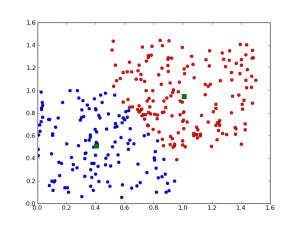Radarr is brimming with social intelligence. With a vibrant and vastly talented group of Data Engineers, Data Scientists, and Data Analysts on board – we live and breathe data science and analytics.
More recently, our machine learning capabilities for the Social listening platform have benefitted from a decentralized and distributed structure.
Our clients are often faced with a variety of marketing challenges – and we try to work hand-in-hand to find the most efficient way of tackling them using data science and machine learning. These could include finding solutions to ‘hard problems‘ like real-time document clustering or- predicting a virality score for posts on social media.

There are also new challenges that occur with changing lifestyles and social media behavior like, automatically grouping similar videos uploaded by users based on different attributes including context, language, and emotions where we have to tap into specializations of both the science and the engineering teams have been only possible with the contribution of both the data science and the engineering teams.
While our data science team has created magic with data, predictive and modeling techniques, our engineering team has helped maintain several terabytes of data and created effective machine learning pipelines.
The team’s latest project has been to develop and deploy a real-time document clustering functionality – allowing our clients to find viral content, identify trends, and proactively react to crisis situations. The three main phases of this data science and ML project are feature extraction and selection, document representation, and clustering. After having experimented with a lot of clustering algorithms with speed and cluster quality as the primary metric for evaluation we settled for a hybrid approach that used both K-means and agglomerative hierarchical clustering. K-means, because of its run-time efficiency and agglomerative hierarchical clustering because of the cluster quality. While our initial motivation was to find similar conversations in a given geographical area, we have also started using it to recommend conversations and articles the user is most interested in.
At Radarr, promoting the best ideas not only pampers our love for an open culture but also helps drive an innovative culture that constantly challenges the status quo. As a social media analytics company, we have developed a similar wavelength for Data Science.


From where it all began in the early days of social listening-, to today’s culmination of intelligence, data science & machine learning-, we are truly excited at the possibilities of what the future of 20/Twenty holds for us, our team, and our clients.











